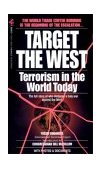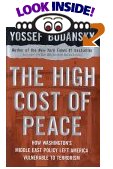|
| Home | About Kashmir Herald | |
Volume 4, No. 2 - August 2004 |
|
| Featured Article |
|
|
|
AN INTERNALLY DISPLACED
KASHMIRI PANDIT’S VIEW OF KASHMIR Any displaced Kashmiri Pandit, returning from a Kashmir visit has to invariably answer two questions. The first being, “what is the current situation there?” And the other, “ have the Kashmiri’s changed?” It is very difficult to provide a dispassionate answer to both these questions, as it requires one to sit on judgment over the events or circumstances. More so, when those very circumstances and events have had a major role in shaping the situation that demands answers for these uncomfortable questions. Also answering these questions becomes a difficult task for a visiting Pandit because, like the majority of Kashmiri muslims he also has added a perspective to his thinking. Nevertheless, one cannot shirk away from the responsibility of recording what one has seen, felt and experienced. The first impression of today’s Kashmir is an antithesis of what has been said and written about it by the past writers, poets and historians. Kashmir's greatest historian Kalhan writes about his native land: "It is a country where the sun shines mildly and winds blow gently. This is the place created by Rishi Kashyap for his glory. This is the land of big and lofty houses, learning, Saffron, icy cool water and grapes, rare in Heaven are plentiful here. Kailash is the best place in the three worlds (Tri-lok), Himalayas the best place in Kailash, and Kashmir the best place in Himalayas". Sir Walter Lawrence writes "The valley is an emerald set in pearls; a land of lakes, clear streams, green turf, magnificient trees and mighty mountains where the air is cool, and the water sweet, where men are strong, and women vie with the soil in fruitfulness. " He further writes that the valley contains everything, which should make life enjoyable. There is sport varied and excellent; there is scenery for the artist and the layman, mountain for the mountaineer, flower for the botanist, a vast field for the geologist and magnificient ruins for the archaeologist. The above was indeed what displaced pandits left behind when they moved out of the place, earlier in search of better vocational avenues and later to escape from the brutality of fundamentalist Islamic zealots. The gory mayhem of 1989-90 notwithstanding, a majority of displaced Kashmiri pandits still remember their ancestral homeland with fond nostalgia. For them, Kashmir continues to be the land of their dreams, the subject of their poems, the source of their creativity and the inspiration behind their struggle. The changing colors of the seasons, the whistling journey of the winds, the caressing movement of waves in the lakes and the benevolence of their presiding deities still dominate the fascinations of the Pandits. But, the visiting Pandits have a lot of surprises in store now. On the surface, Kashmir may not have changed much but deep down it has changed beyond recognition. Today the signs of change and deterioration greet the visitors traveling by road to Kashmir from Jammu immediately after crossing the Jawahar Tunnel. The sales tax barrier at Lower Munda is the first indication of a senseless assault on the beauty and aesthetics of Kashmir. The ecological damage the check post must be inflicting on the valley is any body’s guess. Further down, the ugly commercialization of the land besides the national highway between Wanpoh and Khannabal has not only robbed the area of its pristine beauty but also has made it to resemble any dusty and dirty towns one frequently finds in the deep, interior and backward areas of India. Turning left from Khannabal towards Srinagar one now needs to be prepared for a shock. The long, majestic, tree lined vista is now worse than a gas chamber. The gentle, fragrant breeze that earlier used to caress any traveler sticking out his face from the bus is now a black sooty smoke which burns ones eyes. The silent sound of whistling breeze has now given way to high decibel roars of diesel guzzling vehicles and their poisonous spitting. The air on the Khannabal- Srinagar highway, today, will easily rank as the most polluted breathing medium in the country. Entering the Srinagar city has now become a big nightmare with uncontrolled traffic on Batwara- Dalgate road robbing the area of his grandeur and beauty. True, every society needs to keep pace with the times and Kashmir is, perhaps, trying to compensate the loss of more than a decade. But, in its eagerness to catch up with the lost time, Kashmir is ignoring the basic dynamics behind any progressive change. Kashmir today represents the collective failure of the society, though; the individual prosperity is too stark to remain un-noticed. The vast number of localities and neighbourhoods of Srinagar earlier represented the vibrancy and the energy of the respective inhabitants. The undercurrent of hatred against India was always discernable and the sensitivity towards Pakistan widely visible. Still, the ideological polarization in the communities didn’t prevent the society to move forward and progress then. Today, there are definitely more visible signs of affluence and prosperity in certain area of Srinagar but overall the place seems to have frozen in time. The fight against India has not brought around any salvation, as people overwhelmingly believed 15 years back, but has shattered the lives of many including the displaced Kashmiri Pandits as well. The old Kashmiri Pandit localities, temples, cultural institutions etc today demonstrate a high degree of decay and desolation. Most of these structures have already attained ruinous state. The dust, the dirt, the decay and the dilapidation have taken away the exuberance from the ordinary lives. However, there is no remorse. Displaced Kashmiri Pandits are envied for their survival against odds. They are believed to have progressed immensely both materialistically as wells as monetarily during last fifteen years. There is no acknowledgement or sympathy for the Pandits’ hardship in exile. However, a visiting Pandit is accorded a warm reception but advised against thinking of even contemplating a permanent return. Kashmiri muslims, overwhelmingly, continue to hold Jagmohan responsible for their so called miseries and the displacement of Pandits. This belief is so strongly embedded in the local psyche that it leaves no scope for a debate or an alternate opinion. It has also assumed shape of a fanatical conviction. The visiting Kashmiri Pandit, therefore, usually finds it prudent not to pursue any discussion on that. The people have also developed simple explanations, which usually defy any logic, for the militant activities that happen across the valley with great regularity. If, in a militant attack, only security personnel suffer casualties then it is the work of militants. On the other hand if there are any civil casualties than it is the work of “ Nabedh” (The common classification for surrendered or government sponsored militants). Kashmiri muslims have consolidated their suspicion for India as a result of which all social, political, economic and cultural mishaps that routinely occur in any city and are purely local in nature, are seen as acts of Indian repression. Most of the Indian leaders are seen as anti-muslim and as such anti-kashmiris. Mufti Sayed is seeing a tremendous slide in popularity and seems to have distanced himself from the common man. The initial euphoria is fast getting buried under the unrealized expectations of the masses. Abdullah’s, despite Omar’s parliamentary victory, continue to be pariahs. People, by and large, have developed indifference towards the mainstream politics. But, this indifference is in no way translating into any overwhelming support for separatist amalgams. Hurriyat is seen as a divided house indulging in a political pastime with the individual members interested only in pursuing and furthering their own personal interests. Driving down the Boulevard, the strong influx of tourists is commonly visible. The hoards of shikaras in Dal, the crowded Nehru Park (this writer failed to notice if it continues to be known by that name), the traffic jams on the Boulevard, the pavement eateries, the crowded shops and a large number of tourists in local sensitivity hurting attires would normally indicate a society in peace with itself. But, the reality is discernable only to Kashmiris, both muslims as well as Pandits. Kashmir is in a state of suspended animation with a lid covering the burning embers inside. |
 |
 |
 |
|
|
Archives
| Privacy Policy |
Copyrights
|
Contact
Us | |
||